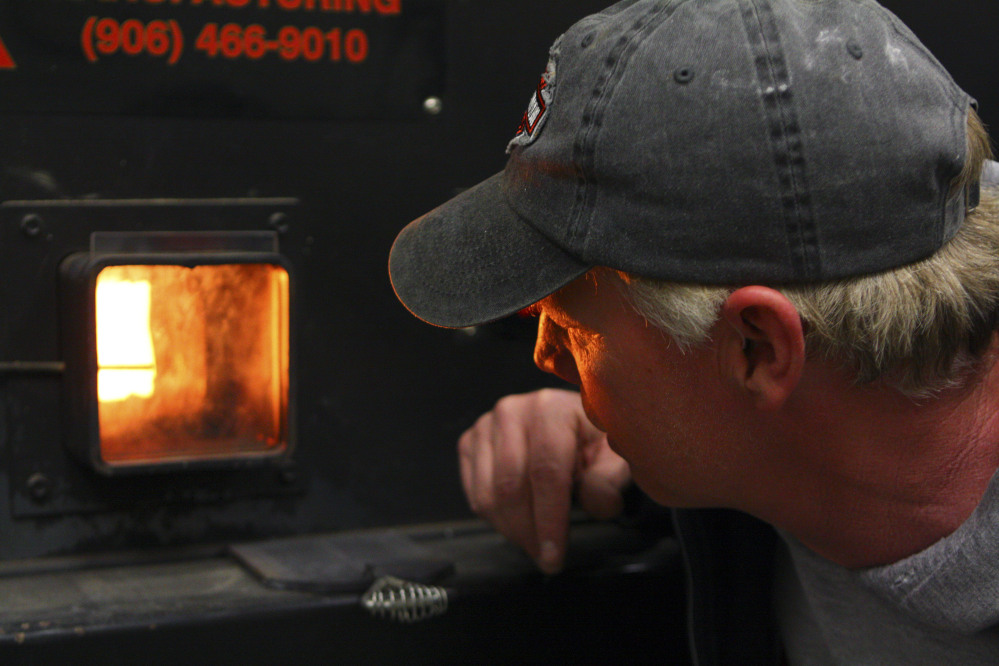Years after federal stimulus dollars funded a Maine Forest Service project to heat with local wood products, schools and other facilities report they have slashed energy bills in half while supporting jobs in the state’s struggling timber industry.
However, some project managers say because they had to borrow money to participate, the effort left them with hefty repayment plans that make their net savings far less than they appear.
In the heating season ending in 2013, the Forest Service credited its Wood to Energy Grant Program with helping 24 facilities replace upward of 900,000 gallons of heating oil with locally produced wood chips and pellets that provide the same energy output for less than half the price.
The Forest Service said the project created or retained more than 335 jobs during the construction phase and supports 13 other forestry jobs through increased usage of wood fuel.
Trade groups say those jobs, while temporary, supported the struggling timber industry at the height of the economic recession.
The Forest Service paid around half the cost of installing furnaces known as wood boilers that burn wood pellets or chips — which the industry calls “biomass” — for steam or water central heating instead of heating oil or natural gas.
The $11.4 million funding for Maine came from the 2009 American Recovery and Reinvestment Act, which funneled the money through the U.S. Department of Agriculture Forest Service to create jobs and spur the economy. Nationally, $10.9 billion in stimulus funds went to energy incentive programs.
Maine has numerous other programs, some also funded with stimulus grants, that give tax rebates or smaller grants to help residents and businesses pay for energy studies and retrofit their homes with high-efficiency lighting, new heating systems and better insulation.
Massachusetts and New Hampshire have scaled-back projects similar to the Maine Forest Service grants. Vermont is credited with leading the nation in efforts to heat with alternative biomass. It helped 54 public schools and other facilities heat with wood chips in projects that began in the mid-1980s.
But the Forest Service says Maine is unique because of the large amount of stimulus money that went to wood boiler grants, as well as its requirement for recipients to report their energy usage for five years.
Thirteen schools or school systems received the Maine Forest Service grants.
The other 11 recipients were hospitals, university campuses, a community college and public buildings such as town offices.
The grant recipients report cutting $1.5 million from heating bills, slashing bills in half for many. Those savings were anticipated to grow in following years, when the new systems would be online for the entire heating season for most facilities.
However, the stimulus grants only partially funded the projects, which individually cost $40,000 to $3.6 million. Some grant recipients said they had to borrow their share of the funding and are now left with hefty repayment plans that make their net savings far less than they appear.
“We have this payback that is going to eat into our savings,” said Mike Hammer, superintendent of the school district that includes Houlton High School.
He said the $70,000 yearly bond payment until 2022 cancels out its estimated savings of $60,000 for the first year it had the system. After a grant of $910,000, the school’s contribution was more than $1.2 million.
Others in the project said they were optimistic their long-term savings would mount as oil prices continued to rise.
“Initial investments are pretty high,” said Dan O’Shea, director of operations and finance for the Falmouth school system.
But, he said, the $1.5 million cost was “one of the best overall investments of the town” for money it got through the sales of old school facilities.
The project director at Millinocket Regional Hospital, Dale McLaughlin, said the hospital expected its $1 million project would pay for itself in just a few years, after taking into account the $500,000 Forest Service grant.
He said the hospital saved $75,000 in heating costs the first year and expected to save $125,000 the next year, when the wood pellet boiler would be in use the entire heating season for the first time.
“It gets us off the dependency of foreign fuel, and we’re able to use fuel from here,” he said. “It’s better for the environment, and it’s a lot of cash.”
Copy the Story LinkSend questions/comments to the editors.



Success. Please wait for the page to reload. If the page does not reload within 5 seconds, please refresh the page.
Enter your email and password to access comments.
Hi, to comment on stories you must . This profile is in addition to your subscription and website login.
Already have a commenting profile? .
Invalid username/password.
Please check your email to confirm and complete your registration.
Only subscribers are eligible to post comments. Please subscribe or login first for digital access. Here’s why.
Use the form below to reset your password. When you've submitted your account email, we will send an email with a reset code.